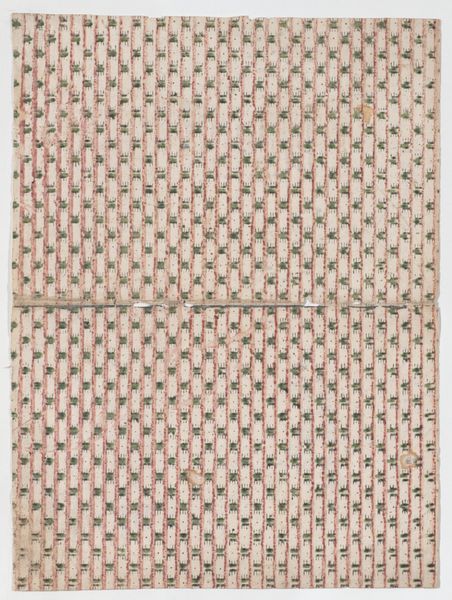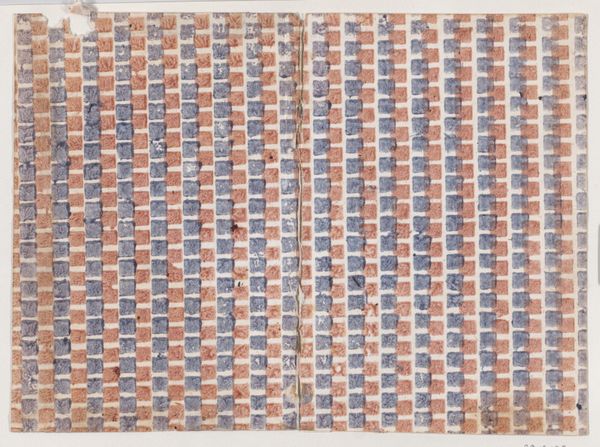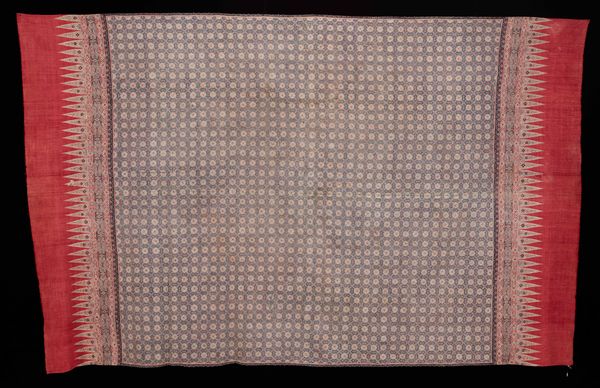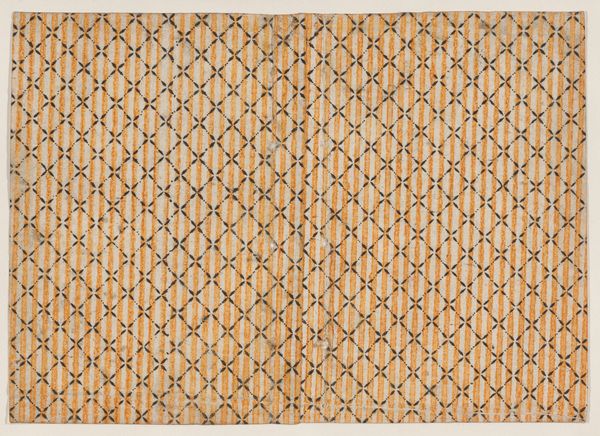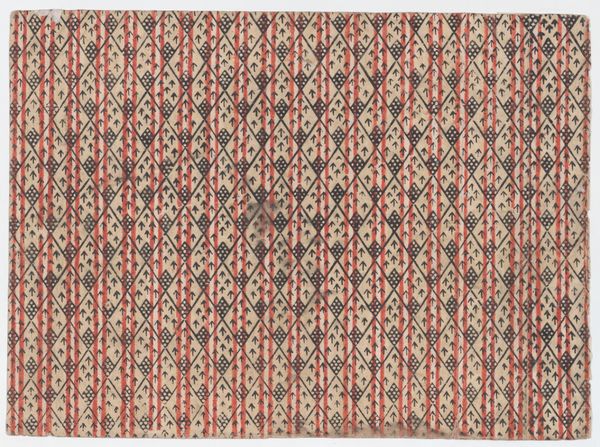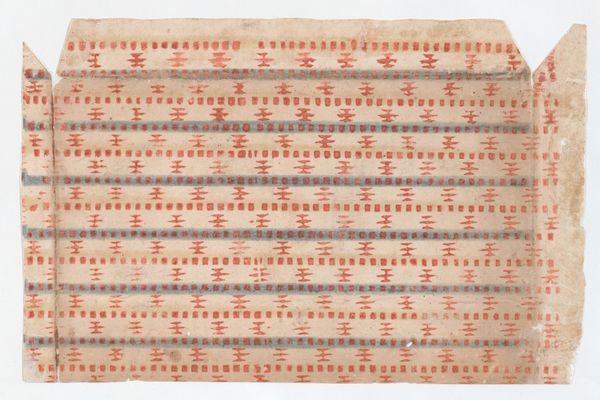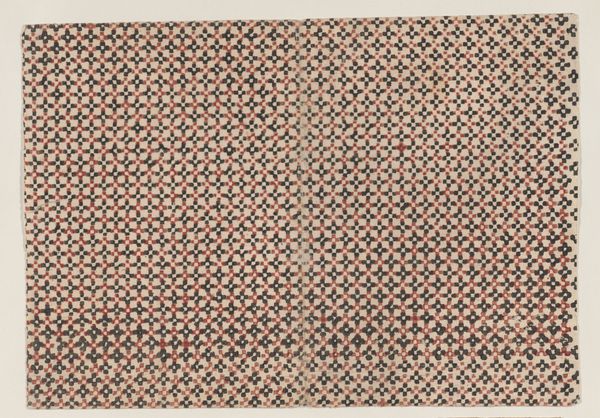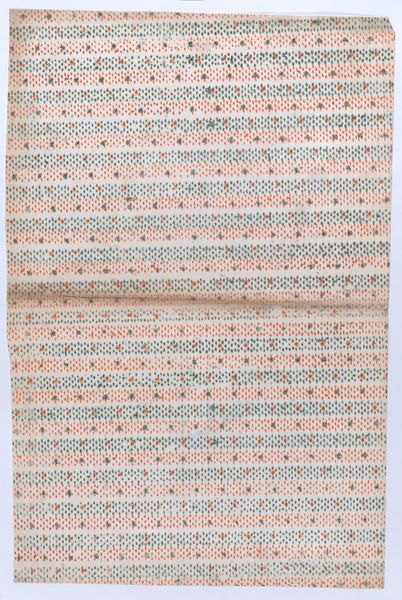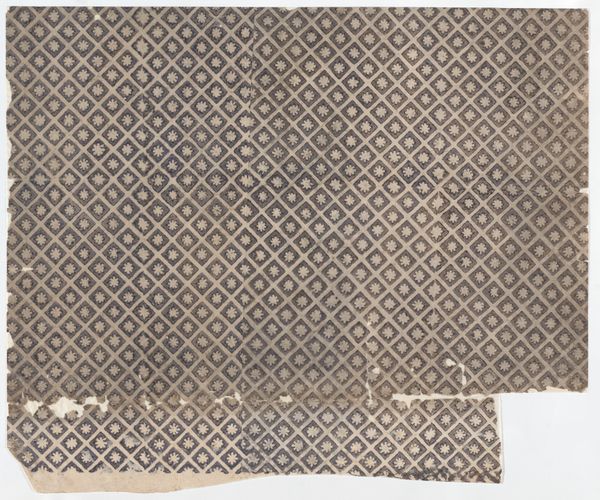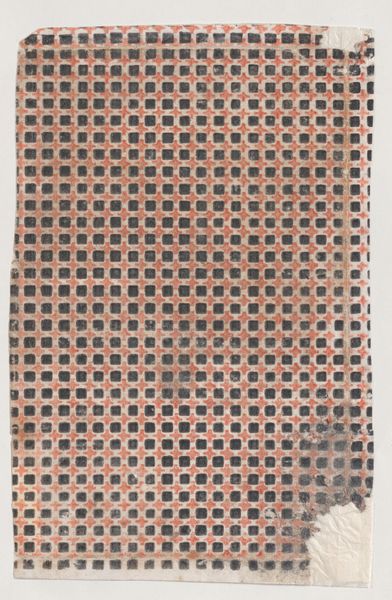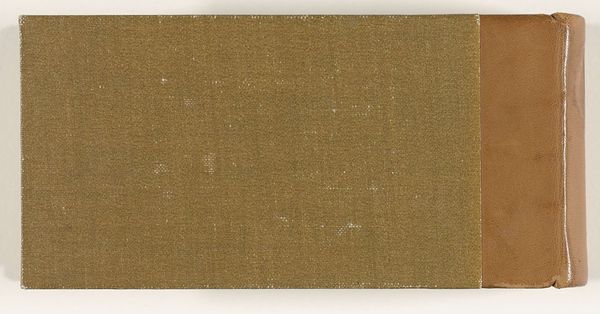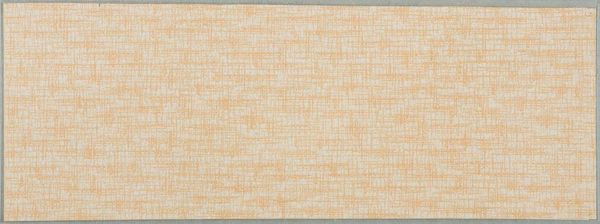
paper
#
paper
#
pattern design
#
repetitive shape and pattern
#
organic pattern
#
repetition of pattern
#
regular pattern
#
pattern repetition
#
textile design
#
imprinted textile
#
layered pattern
#
pattern work
Dimensions: Sheet: 6 7/16 × 9 9/16 in. (16.3 × 24.3 cm)
Copyright: Public Domain
Editor: This is an untitled “Sheet with overall crisscross pattern,” a drawing, maybe even a print, from sometime between 1800 and 1900, held at The Met. It feels so simple, almost humble. What catches your eye when you look at this design? Curator: Immediately, I see the grid, that ancient symbol of order imposed upon chaos. It's rudimentary, uneven, almost yearning for perfect alignment, which it never achieves. The cultural memory embedded in textiles like this resonates deeply. Consider the grid's presence across cultures, from Roman city planning to indigenous weaving traditions. What do you make of the colors? Editor: They're very muted, earthy. Not exactly vibrant. Curator: Precisely. They speak to the natural dyes common during that period, yes, but more than that, to a certain restraint, perhaps even a stoicism. Does the repetition suggest anything to you? Editor: Well, maybe that things were mass produced back then, but then this doesn't look machine-made at all. The lines seem so freehand. Curator: Indeed! That tension between the desire for mass production and the reality of handmade imperfection is critical. Think of the Industrial Revolution dawning; this piece straddles those worlds. The grid wants to be perfect, repeatable, a sign of progress. But the hand… the human touch rebels. Editor: So, it’s like a push and pull between control and letting go? Curator: Exactly. This pattern isn’t just about decoration; it is a meditation on order, control, and the ever-present human element that resists absolute uniformity. It’s a cultural fingerprint from a moment of transition. Editor: I never would have thought something so seemingly simple could contain so much. Curator: The beauty of symbols lies in their layered meanings, revealed through careful observation and contextual understanding.
Comments
No comments
Be the first to comment and join the conversation on the ultimate creative platform.
